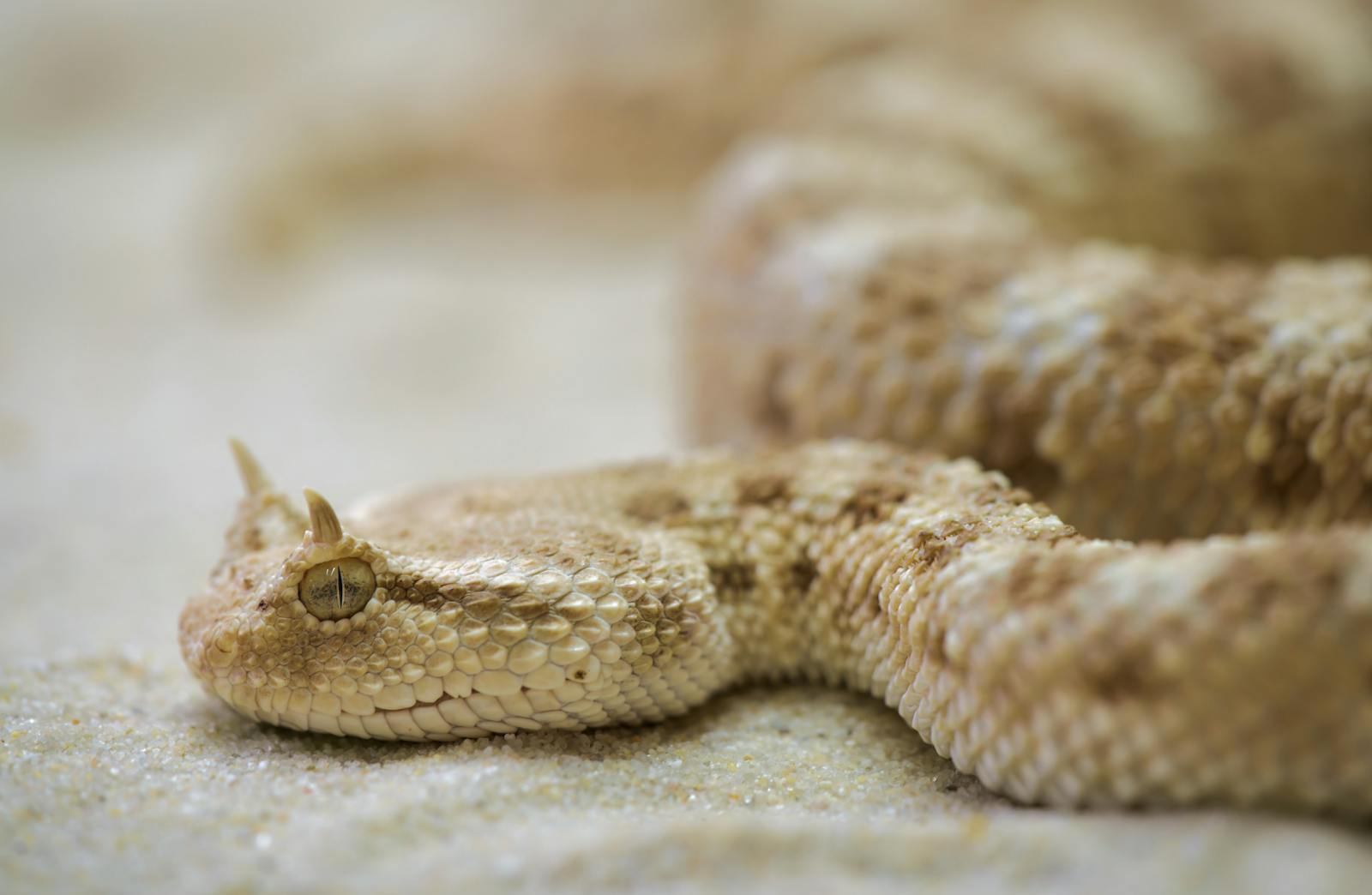Nature is full of remarkable adaptations, but few are as visually striking and evolutionarily clever as certain snake species that appear to have eyes on their tails. These fascinating reptiles have developed a deceptive feature that serves as both protection and hunting strategy. While it might seem like something from science fiction, these false eyes are real biological adaptations that have evolved over millions of years. Let’s explore the mysterious world of snakes with fake eyes on their tails and uncover what this unusual feature is truly hiding.
The Masters of Deception: Spider-Tailed Vipers and Their Relatives
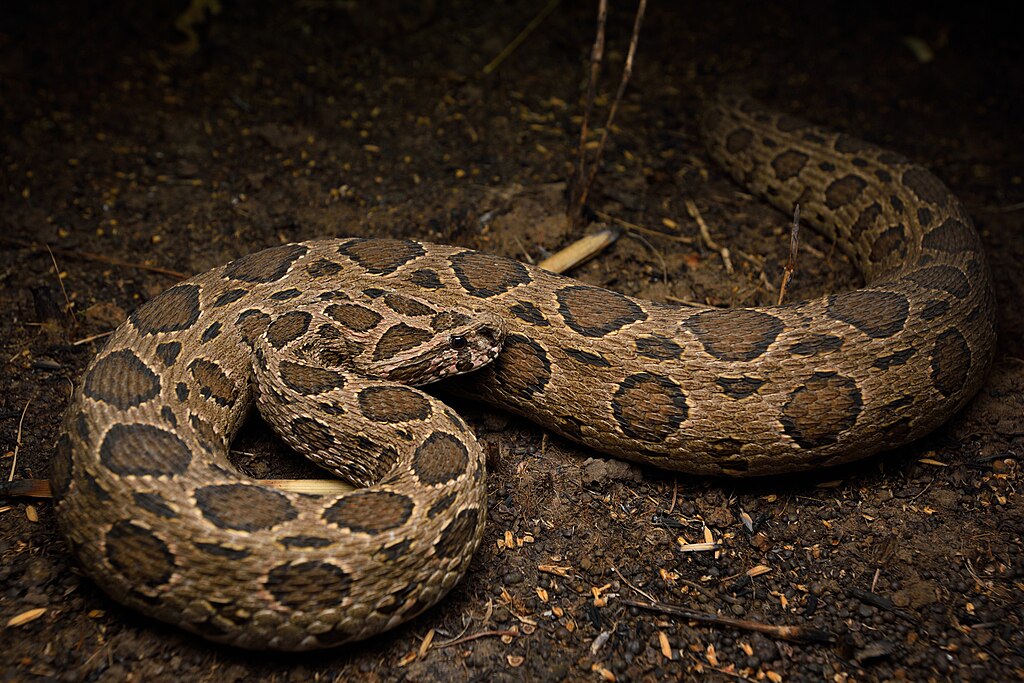
Among the most remarkable examples of snakes with tail mimicry are the spider-tailed vipers and certain species of pit vipers. These cunning reptiles have evolved tails that resemble other creatures, with patterns and shapes that mimic eyes, spiders, or other prey animals. The Iranian spider-tailed viper (Pseudocerastes urarachnoides) represents perhaps the most dramatic example, with a tail that includes elaborate protrusions resembling a spider’s legs and body. This specialized appendage serves as a deadly lure, attracting birds and other potential prey that mistake the tail for an easy meal. When curious animals approach to investigate or attack this apparent prey item, the viper strikes with lightning speed, turning the hunter into the hunted.
Evolution of Eyespot Mimicry
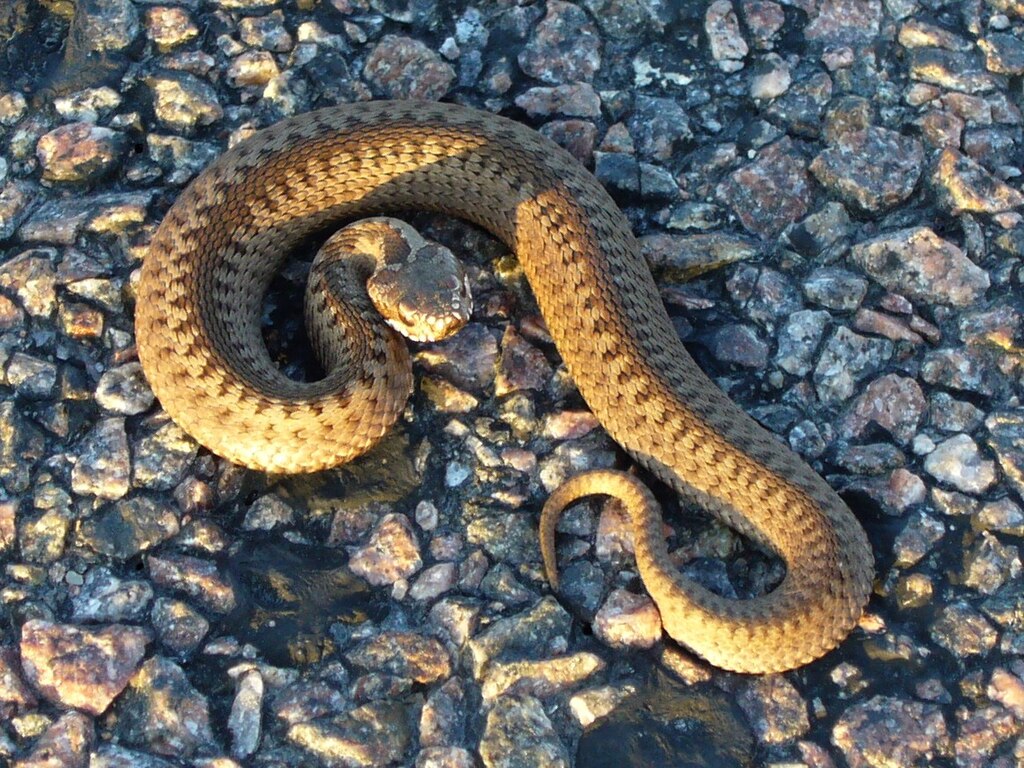
The development of false eyes or “eyespots” on a snake’s tail is a textbook example of evolutionary adaptation through natural selection. This trait didn’t appear overnight but rather developed gradually over thousands of generations as snakes with even slightly eye-like tail markings gained survival advantages. Scientists believe that random genetic mutations initially created simple patterns on some snakes’ tails, and those individuals whose patterns more closely resembled eyes were better able to survive predator encounters. As these survivors reproduced, they passed on their genes for more convincing eye patterns to their offspring. Over evolutionary time, this process refined the mimicry to create the remarkably convincing false eyes we observe today, complete with pupil-like centers, iris-like surrounding patterns, and even reflective qualities in some species.
The Shield-Tailed Snake’s Unique Adaptation
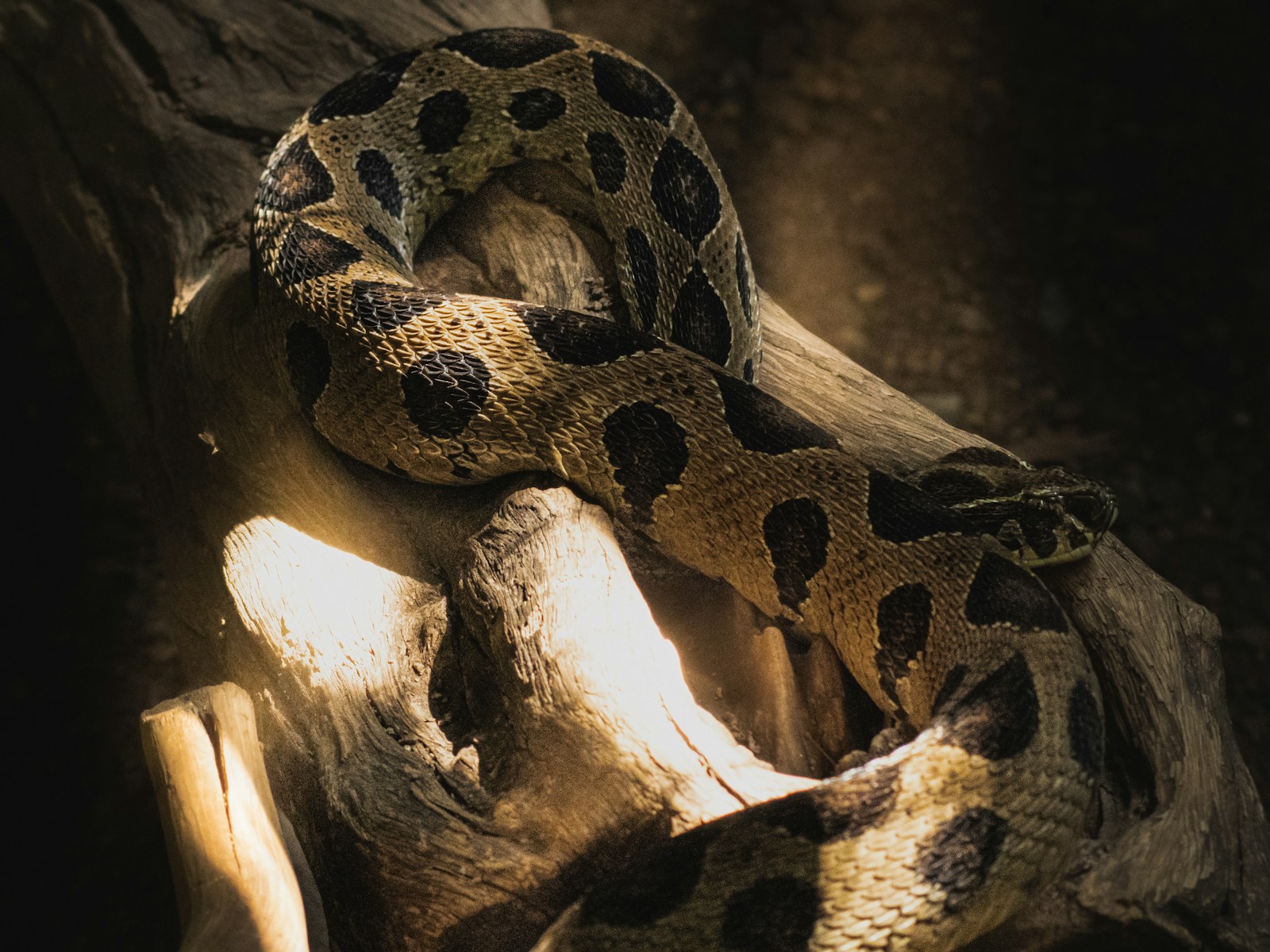
The shield-tailed snake (Uropeltidae family) showcases one of the most specialized tail adaptations among serpents. These relatively small burrowing snakes possess a flattened, disc-like tail that bears a striking resemblance to an eye when viewed from behind. The tail’s surface often features iridescent coloration or distinct patterns that enhance the eye-like appearance. This specialized tail serves multiple functions beyond visual mimicry – it also acts as a physical shield when the snake burrows underground, protecting its vulnerable rear from predators or cave-ins. Additionally, the distinctively patterned tail can be used to block narrow tunnel entrances, preventing predators from accessing the snake’s burrow while the reptile faces away, ready to escape deeper into its tunnel system if threatened.
The Deadly Deception of the Rattlesnake
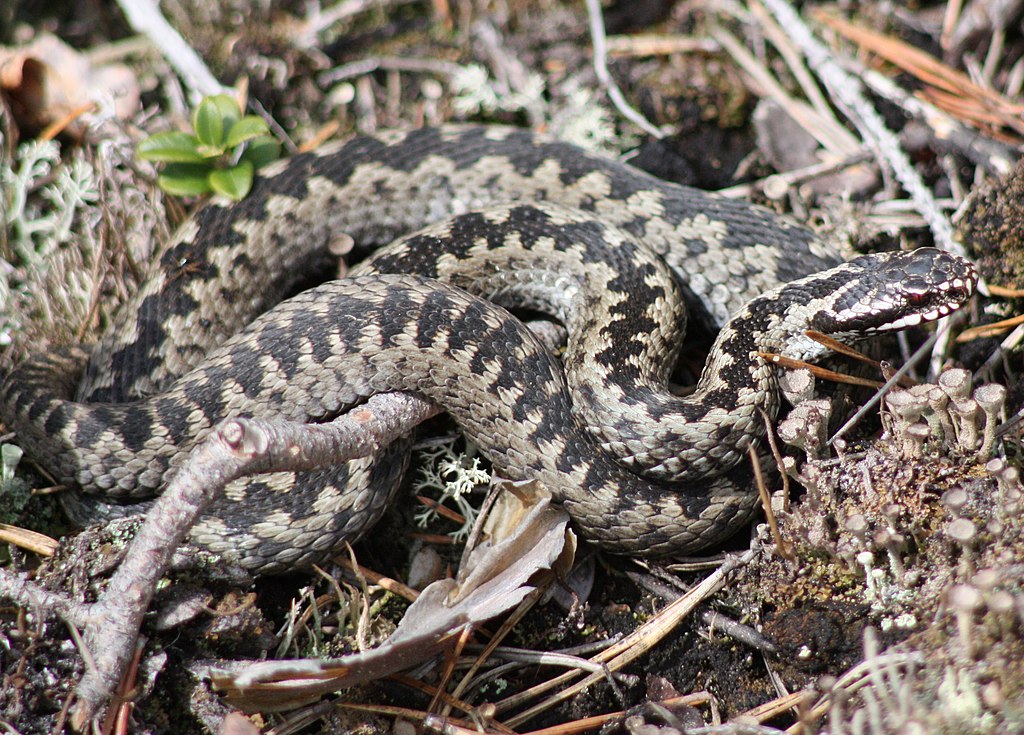
Rattlesnakes employ a different but equally effective tail-based strategy, using their famous rattles to create auditory deception rather than visual mimicry. The rattle, composed of interlocking segments of keratin (the same material as human fingernails), creates a distinctive buzzing sound when the snake vibrates its tail. This auditory warning serves a dual purpose – it alerts potential predators to the snake’s dangerous nature, while also creating confusion about the snake’s exact location. Some young rattlesnakes display a bright yellow or green tail tip before developing their rattle, which they wiggle to distract predators away from their vulnerable head. This combination of visual and auditory tail adaptations demonstrates how snakes have evolved multiple strategies to protect their most vital body parts by redirecting attention to their tails.
The Two-Headed Illusion

Perhaps the most sophisticated eye mimicry occurs in species that create a “two-headed” illusion, making predators uncertain which end is which. The rubber boa (Charina bottae) exemplifies this strategy with a blunt tail that closely resembles its head in shape and sometimes even color pattern. When threatened, this gentle snake will hide its actual head under its coiled body while exposing its tail, essentially offering predators a decoy target. Sharp-eyed observers might notice subtle differences in scaling patterns or the absence of a visible tongue flick from the tail end, but in the heat of a predator encounter, this quick assessment often proves difficult. The rubber boa has been observed absorbing multiple attacks to its reinforced tail while keeping its actual head and vital organs safely protected, demonstrating the effectiveness of this remarkable adaptation.
The Viper’s Tactical Tail Display
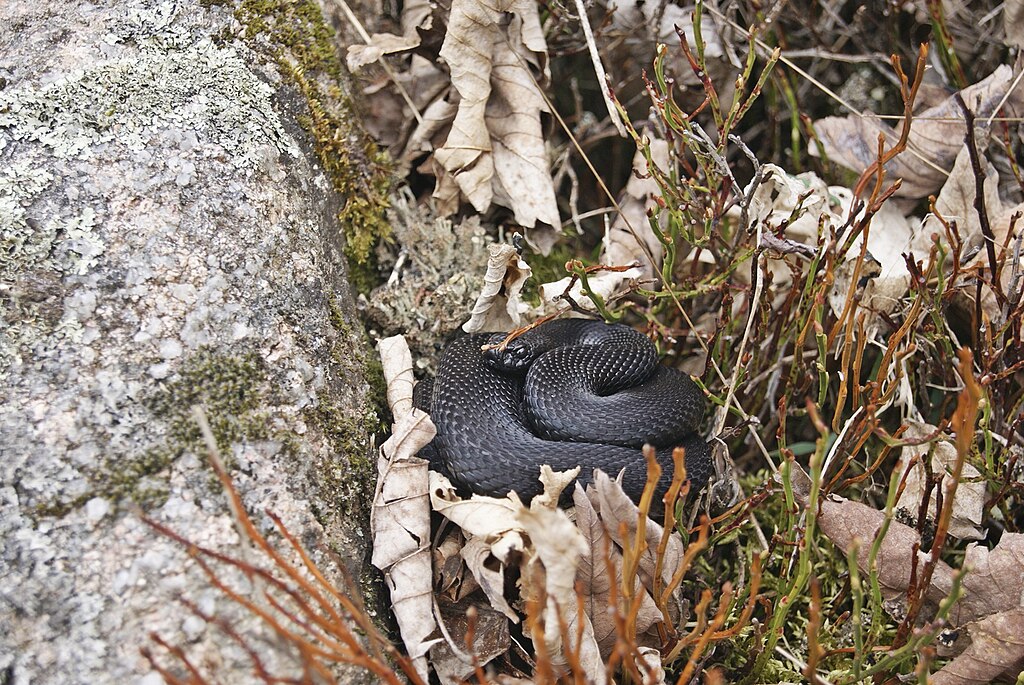
Many viper species employ their tails as sophisticated hunting and defense tools through a behavior known as caudal luring. When hunting, these vipers position themselves in ambush locations and wiggle their distinctively colored tail tips in motions that mimic the movements of worms, grubs, or other small invertebrates. This mesmerizing display attracts curious prey animals within striking distance, allowing the snake to capture food with minimal energy expenditure. The same tail can serve defensive purposes when the snake is threatened, as the bright coloration and movement draws a predator’s attention away from the vulnerable head. Some vipers, like the Saharan horned viper, combine this behavioral adaptation with physical tail modifications, creating a multi-layered deception system that works in various environments and lighting conditions.
False Eyes as Predator Deterrents
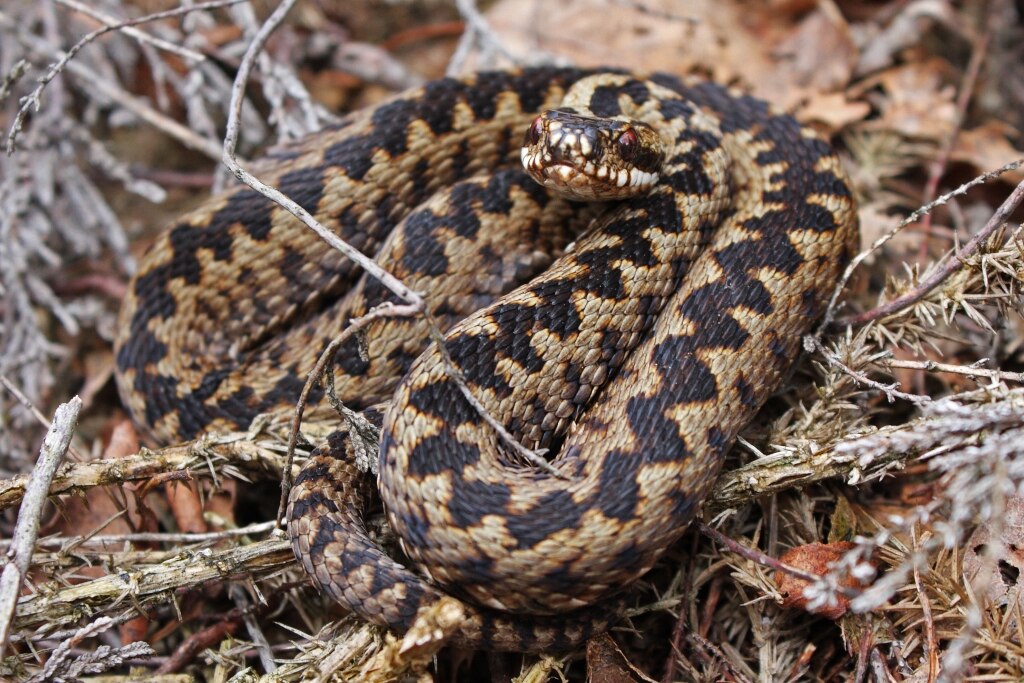
The primary function of eyespots on a snake’s tail is to confuse and deter potential predators. When confronted by a threat, snakes with false eyes will often position their bodies to prominently display their tail while hiding their actual head. This creates a critical moment of hesitation or misdirection for predators, who must quickly determine which end of the snake poses the greatest danger or which end they should attack. Many predators instinctively target the head of prey animals, as immobilizing this region typically ensures a safer, more successful kill. By presenting a convincing “false head” complete with intimidating eyes, the snake increases its chances of surviving an encounter without injury to its actual head and vital organs. Even if a predator strikes the tail, the snake can still escape and recover from what would typically be non-fatal damage.
The Psychological Impact on Predators

The effectiveness of false eye markings extends beyond simple physical misdirection into the realm of psychological warfare against predators. Large, prominent eyespots create an immediate visual trigger that activates fear responses in many potential snake predators, particularly mammals and birds. Research suggests that predators have innate or quickly learned aversions to eye-like patterns, as eyes generally indicate awareness and the potential for counterattack. Some snake species enhance this effect by adopting threatening postures when displaying their false eyes, creating an intimidating presence that may discourage predators from attacking altogether. The psychological impact is particularly effective against younger or inexperienced predators, who may retreat rather than risk an encounter with what appears to be a vigilant, dangerous prey animal staring directly at them.
The Geographic Distribution of Tail-Eye Species
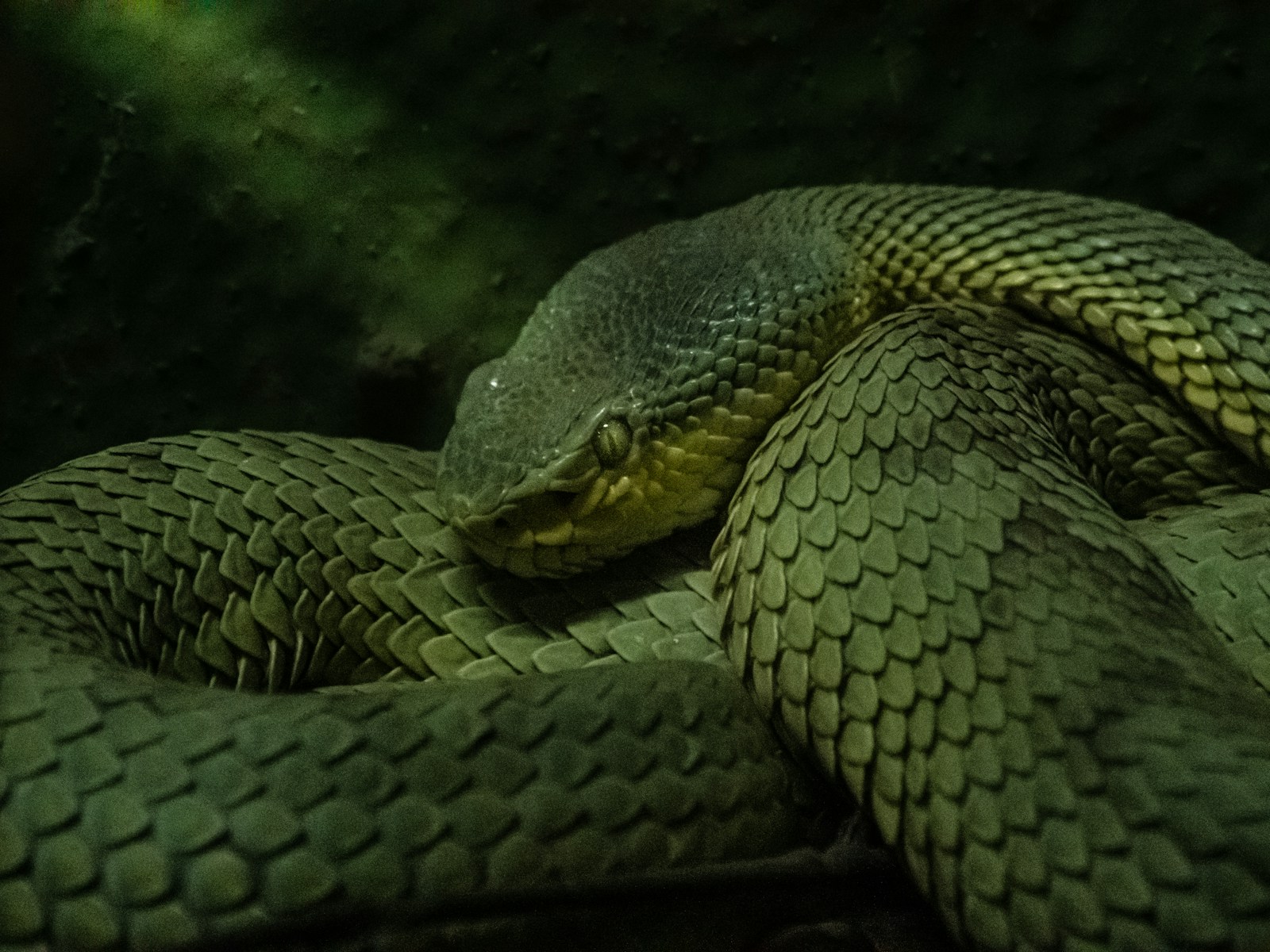
Snake species featuring false eyes or specialized tail mimicry are found across multiple continents, though with interesting distributional patterns that reflect evolutionary history and environmental pressures. The highest concentration of snake species with elaborate tail mimicry occurs in tropical and subtropical regions, particularly in Southeast Asia, Central and South America, and parts of Africa. This geographic pattern likely reflects the intense predation pressure in these biodiversity hotspots, where complex food webs and abundant predator species have driven the evolution of sophisticated defensive adaptations. Interestingly, some island populations show more advanced mimicry than their mainland relatives, suggesting that isolated evolutionary environments may accelerate the development of these traits. Climate also appears to play a role, with more visually complex tail adaptations typically found in regions where snakes remain active year-round rather than hibernating seasonally.
Masters of Mimicry: The Vine Snakes
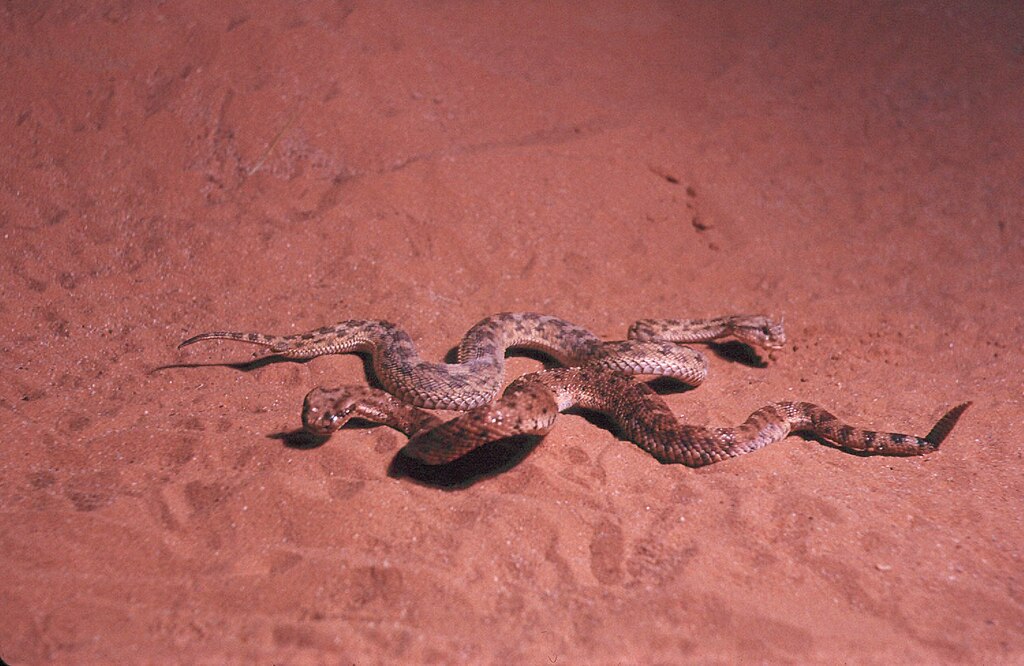
Vine snakes (Oxybelis species) demonstrate some of the most complete body mimicry systems, integrating their tail adaptations into a comprehensive deceptive appearance. These slender, green or brown snakes have elongated heads that blend seamlessly with their thin bodies, making them nearly invisible among the vines and branches they inhabit. The tail region of many vine snake species features subtle color changes or patterns that draw attention away from the actual head, creating confusion for both predators and prey. When threatened, vine snakes may flatten their heads and necks while displaying their tails, creating a disorienting visual scene that masks their true orientation. This complete-body mimicry system allows vine snakes to function effectively as both ambush predators and elusive prey, showcasing how tail adaptations work as part of integrated survival strategies rather than isolated features.
The Trade-Offs of Tail Specialization
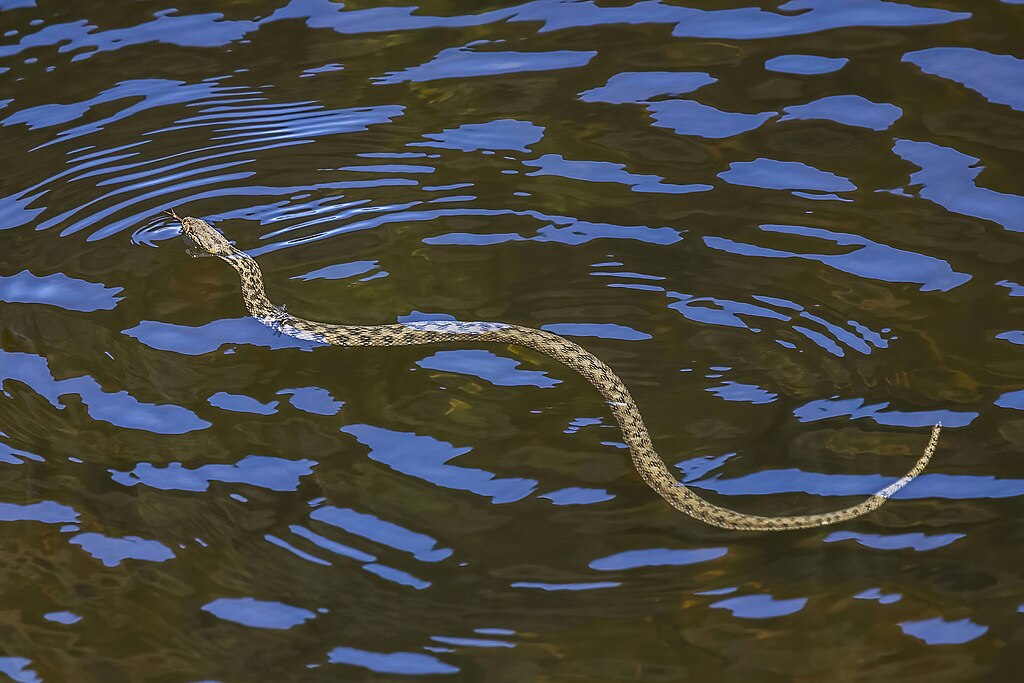
While tail mimicry provides significant survival advantages, it also comes with evolutionary trade-offs that affect other aspects of a snake’s biology and behavior. Species with highly specialized tails often have reduced locomotor capabilities compared to relatives with more conventional tail structures, as the modified tail may be less effective for gripping surfaces or generating propulsive force. Energy investment in developing and maintaining complex tail structures diverts resources that could otherwise support growth, reproduction, or other defensive mechanisms. Some tail-mimicking species display reduced venom potency compared to related species, suggesting a potential trade-off between chemical and visual defensive strategies. Additionally, the attention-grabbing nature of these specialized tails may occasionally backfire, attracting larger predators that recognize the deception or are simply attracted to the movement and distinctive appearance of the modified tail.
Conservation Concerns for These Remarkable Reptiles

Many snake species with distinctive tail adaptations face significant conservation challenges in the modern world. Habitat destruction poses perhaps the greatest threat, as specialized forest-dwelling species lose their homes to agriculture, logging, and urban development. The distinctive appearance of many tail-mimicking snakes makes them targets for the illegal pet trade, where rare or visually striking species command high prices. Climate change threatens to disrupt the delicate balance of predator-prey relationships that have driven the evolution of these adaptations, potentially rendering some mimicry strategies less effective. Additionally, many people still kill snakes on sight due to fear or misunderstanding, with distinctive-looking species sometimes facing greater persecution. Conservation efforts for these remarkable reptiles focus on habitat preservation, public education about their ecological importance, and enforcement of wildlife protection laws to prevent illegal collection and trade.
Studying Nature’s Deceptive Designs

Scientists studying snake tail mimicry employ a variety of research approaches to understand these fascinating adaptations. Field studies track predator-prey interactions in natural settings, documenting how often tail displays succeed in deterring attacks or luring prey. Laboratory experiments using model snakes with various tail patterns help determine which specific visual elements most effectively trigger predator responses. Genetic research examines the hereditary basis for tail patterns, seeking to understand how these complex features are encoded and passed between generations. Modern research increasingly utilizes high-speed videography and computer vision technology to analyze the precise movements of luring tails, revealing subtle motion patterns optimized to attract specific prey species. This multidisciplinary research not only enhances our understanding of evolutionary biology but also provides inspiration for biomimetic engineering and design applications.
Conclusion
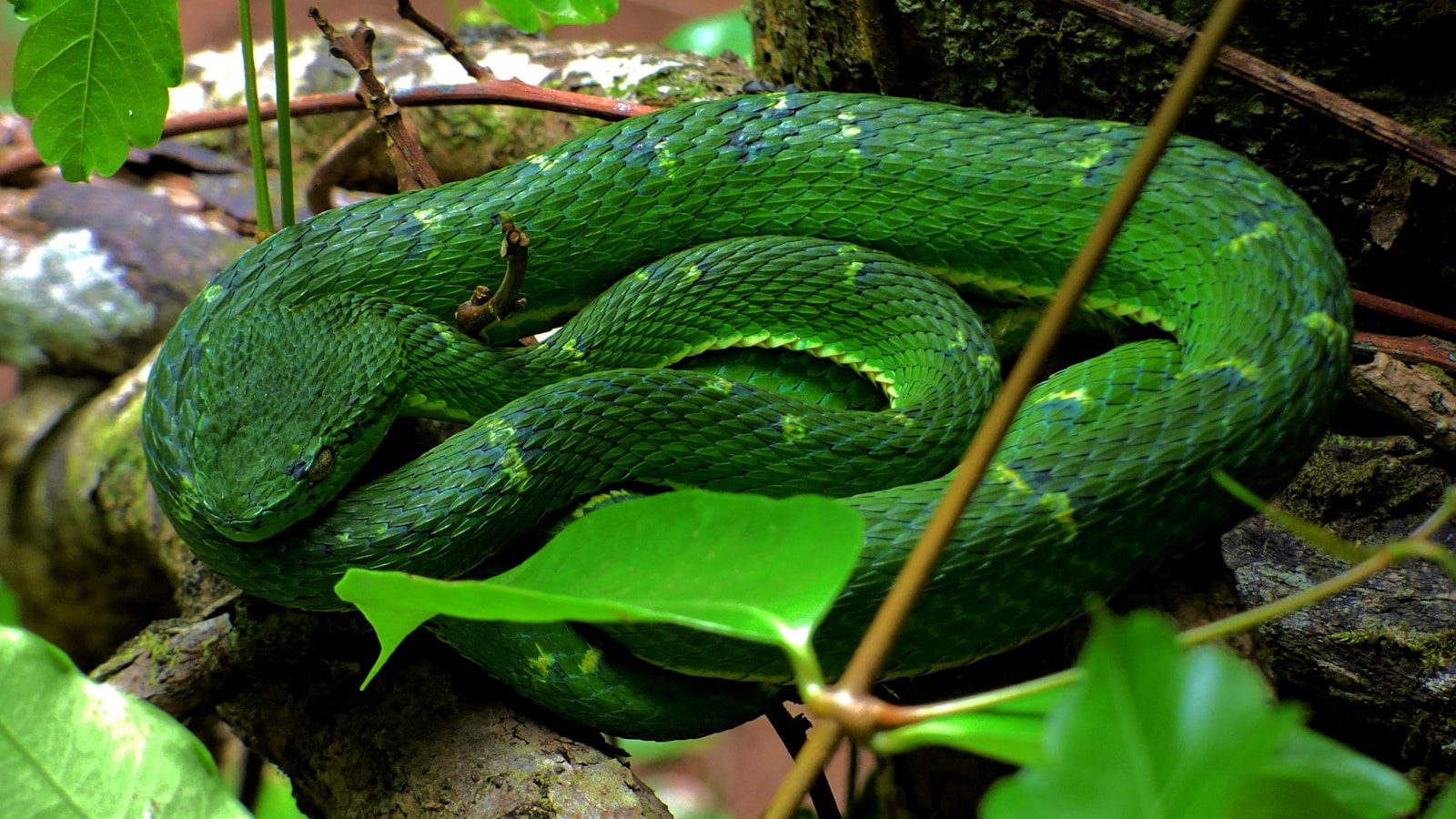
The phenomenon of snakes with “fake eyes” on their tails represents one of nature’s most ingenious evolutionary solutions. These remarkable adaptations showcase the power of natural selection to craft sophisticated deceptive mechanisms that increase survival chances in dangerous environments. From the hunting lures of the spider-tailed viper to the defensive eyespots of many colubrid species, these false eyes serve multiple purposes while revealing the ongoing evolutionary arms race between predators and prey. As we continue to study and understand these fascinating reptiles, we gain not only scientific knowledge but also a deeper appreciation for the complex and often surprising adaptations that have emerged through millions of years of evolution. These snakes remind us that in nature, appearances can be deceiving – sometimes by deliberate design.

